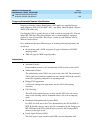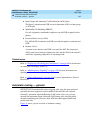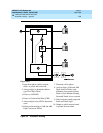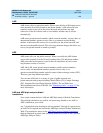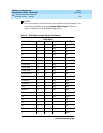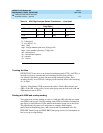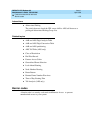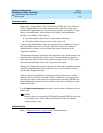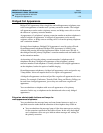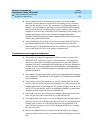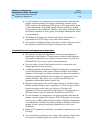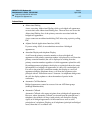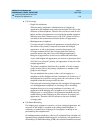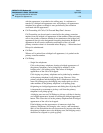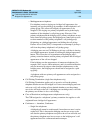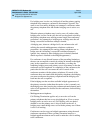
DEFINITY ECS Release 8.2
Administrator’s Guide
555-233-506
Issue 1
April 2000
Features and technical reference
1174Bridged Call Appearance
20
Bridged Call Appearance
Bridged Call Appearance allows single-line and multiappearance telephone users
to have an appearance of another user’s primary extension number. The bridged
call appearance can be used to originate, answer, and bridge onto calls to or from
the other user’s primary extension number.
An appearance of a telephone’s primary extension number at another telephone is
called a bridged call appearance. A bridged call appearance can be used to
originate, answer, or bridge onto an existing call to or from the primary telephone
user’s extension number.
On single-line telephones, Bridged Call Appearance is used by going off-hook.
On multiappearance telephones, Bridged Call Appearance is used by going
off-hook and pressing the bridged appearance button. In both cases, the user is
then bridged onto the primary telephone’s extension number and can handle calls
on that extension number.
An incoming call rings the primary extension number’s telephone and all
telephones that have a bridged call appearance of the telephone’s primary
extension number. Each telephone is visually alerted for all bridged appearances
on the telephone, but has the option of audible ringing.
On multiappearance telephones, a bridged call appearance can be assigned to any
2-lamp button. It does not require the use of a regular call appearance.
A bridged call appearance can be used just like a regular call appearance for most
features. For example, Conference, Transfer, Hold, Drop, and Priority Calling can
be used from a bridged appearance, just as they are used from a regular call
appearance.
You can administer a telephone with zero call appearances of its primary
extension. In this way, a telephone can be administered to have only bridged
appearances.
Extension administrable buttons and lamps for
multiappearance telephones
You can administer the message lamp and some feature buttons to apply to a
specified extension rather than the extension of the telephone they reside on.
■ You can administer the message lamp to light when messages are waiting
for the extension specified on the Station screen. In this way, the bridged
user’s telephone can be set up to indicate when messages are waiting for
the primary extension.



